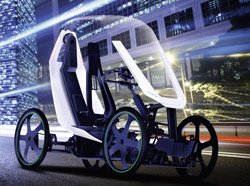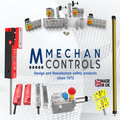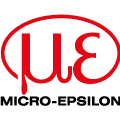
Posted to News on 15th Dec 2016, 11:42
Schaeffler: from intelligent rolling bearings to the Bio-Hybrid
The focus for Schaeffler at the Consumer Electronics Show (CES) is new products for the future of urban and networked traffic, with the "Bio-Hybrid" pilot project being on show for the first time at a trade fair. The automotive and industrial supplier is also exhibiting smart components and systems which generate data and can network all of tomorrow's road users.

According to a United Nations study, by 2050, the worldwide urban population will have grown by 2.5 billion. While urban development has stagnated in many industrialised countries, it is exploding in the metropoles of Africa and Asia. Just three countries account for 37 per cent of the total growth: China, India and Nigeria.
Prof. Peter Gutzmer, Deputy CEO and Chief Technology Officer at Schaeffler explains: "As infrastructure expansion is not keeping pace with population growth, this development is resulting in enormous traffic problems. Intermodal traffic in areas where space is at a premium and the ability to change smoothly from one means of transport to another will be highly significant factors in tomorrow's urban centres. This is where the technical solutions that we are in the process of creating are required."
One innovative concept is Schaeffler's Bio-Hybrid, a vehicle which, as far as its size and range is concerned, sits somewhere between a pedelec and a small electric car. It has a roof, so, unlike a bicycle, it offers some protection from the weather. The vehicle is only 85cm wide and has four wheels for good driving stability. This width was chosen to ensure the vehicle can be used on cycle paths in most countries. The Bio-Hybrid's driver does not have to rely entirely on muscle power as further assistance is provided by an electric drive, as with a pedelec. The electric motor recuperates energy during braking and feeds the captured electric power back to the battery. The vehicle is designed to have a range of 50-100km. If the battery is running low, it can be simply removed and recharged from any domestic socket.
This mobility product is a real eye-catcher at CES due to its functional, high-quality design and its integral smartphone technology. The concept has been designed as a platform to take other superstructures, such as a three-wheel variant. It is also possible to create a transporter version without having to make significant modifications to the drive and axles - something that might be suitable for delivering pizzas. Prof. Gutzmer concedes: "The Bio-Hybrid is not a high-volume product, more an inspiration when considering new forms of mobility. However, we can imagine producing a test fleet for use in a metropolis together with a suitable partner."
Schaeffler is also showing an electric kickboard at CES, which has been specifically designed for getting around quickly. It is similar to a skateboard with two axles and a generously sized deck. However, the deck has an integral battery that drives the rear axle via an electric motor. The kickboard is controlled using a stick with an ergonomically designed grip. Explaining the motivation behind this product, Prof. Gutzmer says: "Solutions such as these for the so-called "last mile' make it easier for people to make use of public transport and car sharing in the urban environment."
Sensor technology for the networked automobiles of the future
The passenger car of the future will also be an integral part of the mobility network. To achieve this, it is necessary to develop smart components and systems that are capable of generating data. For example, it is important for car-sharing businesses to have an overview of the maintenance intervals of all the vehicles in their fleet. The operator must therefore have access to information on the technical condition of all the components in each vehicle. Using bearings with integral sensor functionality, such as those presented by Schaeffler at CES, makes this a possibility. However, generating technical data alone is not enough: interpreting them is crucial. Prof. Gutzmer notes: "The automobile will become part of the Internet of Things. Our sensor bearings, which are being fitted wherever components move and forces occur, provide first-hand data."
Data captured while driving could provide information not just on the vehicle but on the condition of the road as well. This is made possible by systems such as the intelligent active roll control, which Schaeffler is also presenting at CES. Not only does it provide increased driving comfort and greater safety for passengers, it could also, in combination with high-resolution GPS, be used to send information on poor road surface conditions to vehicles following on behind or to the infrastructure operator. For Prof. Gutzmer, the combination of mechatronics expertise and digital information is the essential prerequisite for overcoming the challenges of increasing urban traffic. He says: "Mechanical perfection will always be decisive for the mobility solutions of the future. But in the end, it is not all about reliability - it is about people's safety as well."
Go to www.schaeffler.com to learn more about the company's vision for urban and networked traffic.
Want the latest machine building news straight to your inbox? Become a MachineBuilding member for free today >>
Aegis House
Grove Farm, Lane End
HP14 3NR
UNITED KINGDOM
+44 (0)1494 858438

















